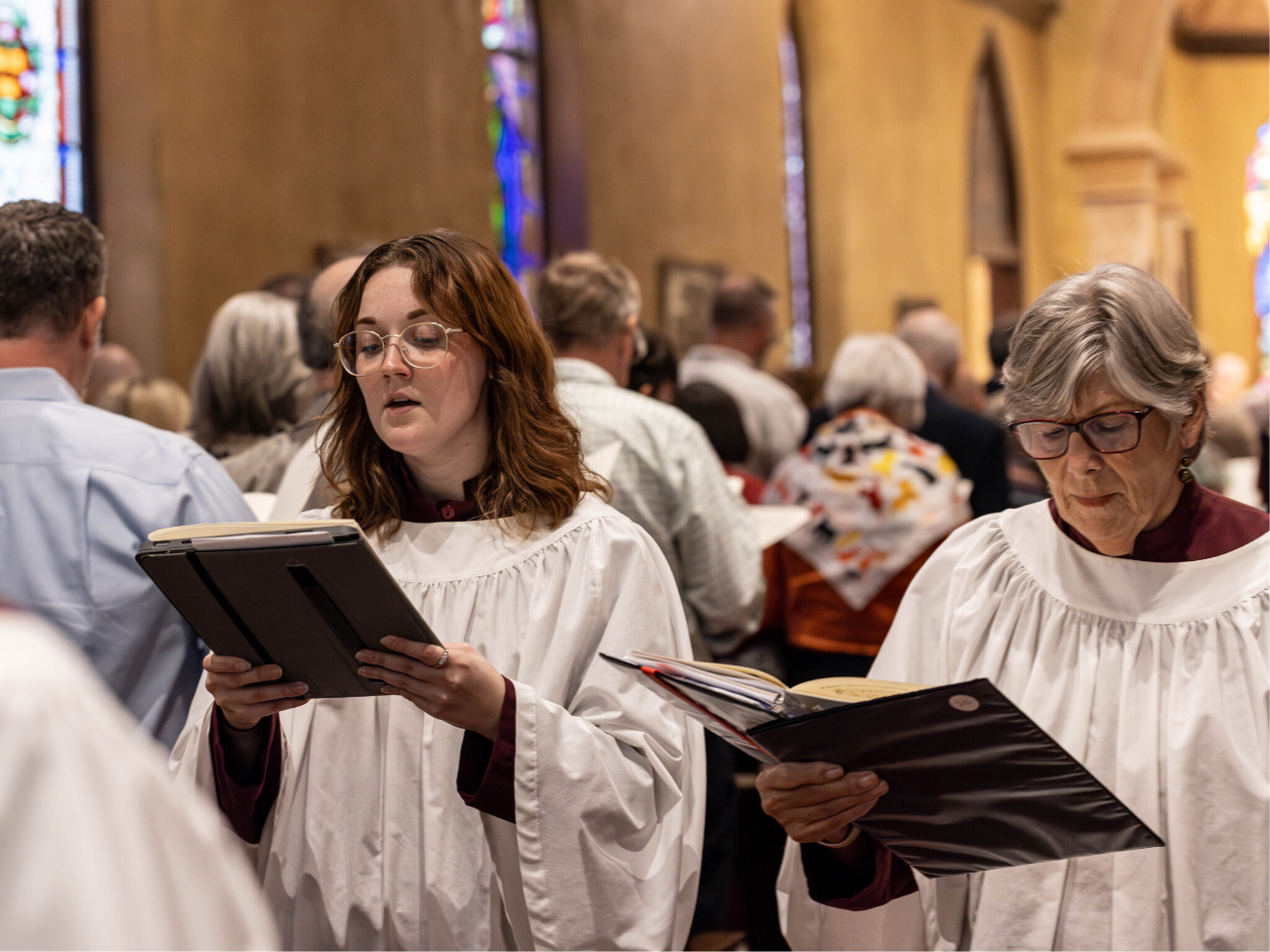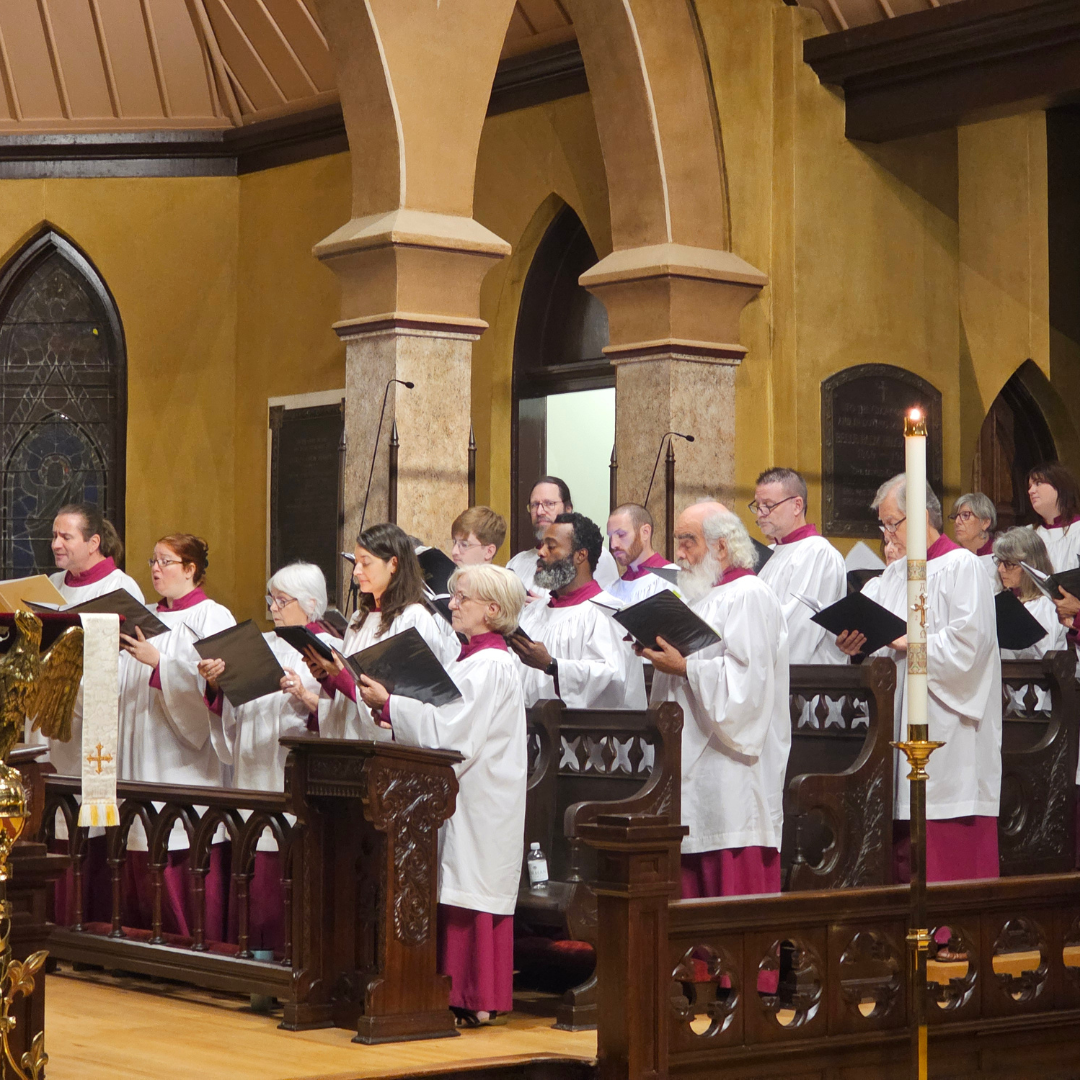
The Transfiguration is one of a series of manifestations in the Gospel accounts – along with the angels at his birth and the descent of the Spirit at his baptism – by which Jesus is revealed to be the Son of God.
The Collect for the feast focuses upon Christ’s glory and our desire to see it: ‘grant that we...may by faith behold the King in his beauty...’. The Introit chant, with verses from Psalm 27, speaks of this same desire and suggests that it may be fulfilled in the place and act of worship: ‘Your face, O Lord, will I seek; do not hide your face from me. One thing have I asked of the Lord...that I may dwell in the house of the Lord...to behold the fair beauty of the Lord, and to seek him in his temple’.
But the transfigured Jesus not only foreshadows the risen and glorified Christ; he also, as we see in the Office hymns, shows the transformation and union with God that await all those who earnestly seek the Lord. Our Sequence hymn, ‘O wondrous type! O vision fair’ ([137], a translation of a 15th-century Latin Office hymn for the feast) accordingly not only recounts the event but also makes clear its import: the glory ‘which Christ upon the mountain shows’ is also ‘glory that the Church may share’, ‘glory [that] shall be theirs above who joy in God with perfect love’. The word ‘type’ in the first line is a key to this: though the translator likely had in mind the technical theological meaning of this word (i.e., something that prefigures a later event, often referring to an Old Testament person or occasion interpreted Christologically), the Greek root of this English word means, among other things, a print, impression, figure, outline, form, pattern, mold, model, example – many of which things Christ may be said to be for us, if we will let him, to lead to our own transformation. ‘O nata lux de lumine’ (another Office hymn [134], sung by the choir to music by 16th-century English composer Thomas Tallis originally written for a different portion of this hymn), prays that the light of Christ will shine forth in the life of the faithful.
The location of the Transfiguration in the synoptic Gospel accounts reminds us, though, that this light and transformation are connected to complete self-denial: just before this event Our Lord admonishes his followers to take up their cross (not just a burden, but the instrument of one’s own death) and lose their life in order to follow him, and just after it, he predicts his betrayal. Perhaps this is why he tells the witnesses of the Transfiguration not to tell anyone about it until after his Resurrection (as heard in the Communion chant, also the basis of the organ prelude by living American composer Gerald Near): in his life and work, and so in ours, the self-emptying and the glory are inseparable, each incomplete without the other.
This Feast of the Transfiguration inaugurates a series of feast days which, in 2025–26, either fall on a Wednesday or are being transferred to a Wednesday, allowing the St David’s Choir, which normally rehearses on Wednesday evenings, to be present. In addition to its customary offering of one or two anthems, the choir will be singing various portions of the Mass Ordinary (Kyrie, Gloria, Agnus Dei, etc.). On this occasion the Gloria comes from the Missa ‘O Rex gloriae’ by perhaps the greatest late-Renaissance composer, Palestrina, based on his own motet by the same name.




Login To Leave Comment